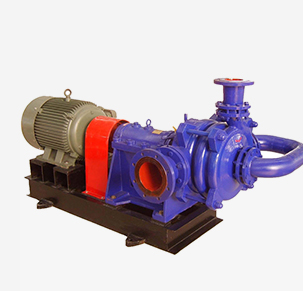Scottish Gaelic
- Afrikaans
- Albanian
- Amharic
- Arabic
- Armenian
- Azerbaijani
- Basque
- Belarusian
- Bengali
- Bosnian
- Bulgarian
- Catalan
- Cebuano
- Corsican
- Croatian
- Czech
- Danish
- Dutch
- English
- Esperanto
- Estonian
- Finnish
- French
- Frisian
- Galician
- Georgian
- German
- Greek
- Gujarati
- Haitian Creole
- hausa
- hawaiian
- Hebrew
- Hindi
- Miao
- Hungarian
- Icelandic
- igbo
- Indonesian
- irish
- Italian
- Japanese
- Javanese
- Kannada
- kazakh
- Khmer
- Rwandese
- Korean
- Kurdish
- Kyrgyz
- Lao
- Latin
- Latvian
- Lithuanian
- Luxembourgish
- Macedonian
- Malgashi
- Malay
- Malayalam
- Maltese
- Maori
- Marathi
- Mongolian
- Myanmar
- Nepali
- Norwegian
- Norwegian
- Occitan
- Pashto
- Persian
- Polish
- Portuguese
- Punjabi
- Romanian
- Russian
- Samoan
- Scottish Gaelic
- Serbian
- Sesotho
- Shona
- Sindhi
- Sinhala
- Slovak
- Slovenian
- Somali
- Spanish
- Sundanese
- Swahili
- Swedish
- Tagalog
- Tajik
- Tamil
- Tatar
- Telugu
- Thai
- Turkish
- Turkmen
- Ukrainian
- Urdu
- Uighur
- Uzbek
- Vietnamese
- Welsh
- Bantu
- Yiddish
- Yoruba
- Zulu
Telephone: +86 13120555503
Email: frank@cypump.com
Lùna . 19, 2024 15:21 Back to list
Efficient Septic System Lift Pumps for Effective Wastewater Management Solutions
Efficient Solutions for Wastewater Management The Role of Lift Pumps in Septic Systems
Wastewater management is a pressing issue that affects countless communities around the world. Properly managing wastewater is essential for environmental protection and public health. Among the various components of wastewater treatment, lift pumps play a crucial role, particularly in septic systems, by ensuring efficient transport and treatment of wastewater. This article explores the importance of lift pumps, their operational efficiency, and the innovations that are enhancing their functionality in septic systems.
Understanding Lift Pumps
Lift pumps, also known as sewage pumps or effluent pumps, are specially designed to move wastewater from lower elevations to higher elevations within a septic system. They are essential for homes and businesses located in areas where gravity flow is insufficient to direct wastewater toward the treatment facility. Lift pumps push wastewater up through pipes to reach the treatment system, ensuring that the wastewater does not stagnate or cause backups.
Importance of Efficiency
The efficiency of lift pumps in septic systems cannot be overstated. An efficient pump minimizes energy consumption, reduces operational costs, and extends the lifespan of the entire wastewater treatment system. When lift pumps operate optimally, they help maintain the flow of wastewater, ensuring that it reaches treatment facilities without delays. Conversely, inefficient pumps can lead to increased energy costs and potential environmental hazards, such as overflows and backups that can contaminate local water sources.
Innovations in Lift Pump Technology
lift pump for septic system efficient solutions for wastewater ...

Recent advancements in lift pump technology have significantly improved their efficiency and reliability. Manufacturers are now incorporating features like variable speed drives, smart controls, and energy-efficient designs. Variable speed drives allow pumps to adjust their power output based on the volume of wastewater, reducing energy consumption during periods of low flow. Smart controls can monitor pump performance in real-time, alerting operators to potential issues before they escalate into costly failures.
Moreover, the development of submersible lift pumps has enhanced the functionality of septic systems. These pumps are designed to function underwater, reducing noise pollution and minimizing the risk of mechanical failure due to water exposure. Submersible pumps are also easier to maintain, as they can be accessed without disrupting the above-ground environment.
Environmental Considerations
Efficient lift pumps contribute significantly to environmental protection in wastewater management. By ensuring that wastewater is effectively transported and treated, these pumps reduce the risks of contamination of soil and groundwater, which are critical for maintaining a healthy ecosystem. Advanced lift pump systems often incorporate features that prevent overflows and reduce odors, promoting cleaner and safer living conditions for surrounding communities.
Conclusion
In conclusion, lift pumps are an integral component of efficient wastewater management systems, particularly in septic applications. As technology advances, the efficiency and effectiveness of these pumps continue to improve, contributing to more sustainable wastewater treatment solutions. By investing in high-performance lift pumps and emphasizing maintenance and monitoring, communities can enhance their wastewater management systems, protect their environment, and promote public health. As we look to the future, it is crucial to continue exploring innovative solutions that can make wastewater management more efficient, sustainable, and environmentally friendly.
-
Custom Drilling Mud and Slurry Pump Supplier - High Efficiency, Tailored Solutions
NewsJun.10,2025
-
Supply Vertical Submersible Sewage Pump High-Efficiency WQ/QW Pumps Supplier
NewsJun.10,2025
-
Premium Sewage Ejection System & Pumps Efficient Waste Removal
NewsJun.09,2025
-
Premium Wholesale Slurry Pump Impellers Durable & Efficient Slurry Handling
NewsJun.09,2025
-
Top Sewage Pump Companies Durable Industrial Solutions for Efficiency
NewsJun.09,2025
-
Heavy Duty Slurry Pumps - OEM High Performance & Bulk Wholesale
NewsJun.09,2025










